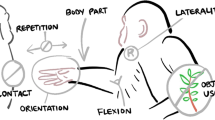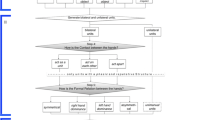Abstract
One critical aspect of modern psychology involves limitations to the currently dominant variable-oriented methodological approach. In this paper, I address those limitations using gesture studies as an example. I first discuss the theoretical and methodological problems of this approach, which prevent a full understanding of the nature of gestures. Specifically, I explain how variable-oriented approaches do not allow researchers to understand initial behavior; how causal relationships do not demonstrate the mechanisms of the relationship between gestures and other psychological processes; and how the analysis of individual differences does not allow researchers to make conclusions on an individual level. I argue that an alternative approach could benefit researchers’ understanding of the nature of gestures, both from a theoretical and methodological point of view. Based on Vygotskian principles and Luria’s framework, I offer an example of how to establish the nature of gestures. Finally, I provide an example of alternative study designs and discuss possible further direction in gesture use studies.
Similar content being viewed by others
References
Basilio, M., & Rodríguez, C. (2017). How toddlers think with their hands: social and private gestures as evidence of cognitive self-regulation in guided play with objects. Early Child Development and Care, 187(12). https://doi.org/10.1080/03004430.2016.1202944
Bang, J. (2010). What are the phenomena studied in psychology: Individual, behaviour, group, or...? In J. Valsiner, S. Salvatore, J. Travers-Simon, A. Gennaro (Eds.) Yearbook of Idiographic Science II, 45 - 56
Bergman, L. R., & Lundh, L.-G. (2015). Introduction: The Person-oriented approach: Roots and roads to the future. Journal for Person-Oriented Research, 1 (1–2). https://doi.org/10.17505/jpor.2015.01
Bergman, L. R., von Eye, A., & Magnusson, D. (2015). Person-oriented research strategies in developmental psychopathology. John Wiley & Sons, Inc. https://doi.org/10.1002/9780470939383.ch21
Bourjade, M., Cochet, H., Molesti, S., & Guidetti, M. (2020). Is conceptual diversity an advantage for scientific inquiry? A case study on the concept of ‘gesture’in comparative psychology. Integrative Psychological and Behavioral Science, 54(4). https://doi.org/10.1007/s12124-020-09516-5
Cameron, H., & Xu, X. (2011). Representational gesture, pointing gesture, and memory recall of preschool children. Journal of Nonverbal Behavior, 35(2). https://doi.org/10.1007/s10919-010-0101-2
Caute, A., Pring, T., Cocks, N., Cruice, M., Best, W., & Marshall, J. (2013). Enhancing communication through gesture and naming therapy. Journal of Speech, Language, and Hearing Research, 56(1). https://doi.org/10.1044/1092-4388(2012/11-0232)
Chirkov, V. (2015). Fundamentals of Research on Culture and Psychology. Routledge. https://doi.org/10.4324/9781315768328
Chu, M., Meyer, A., Foulkes, L., & Kita, S. (2014). Individual differences in frequency andsaliency of speech-accompanying gestures: The role of cognitive abilities and empathy. Journal of Experimental Psychology: General, 143(2). https://doi.org/10.1037/a0033861
Cummins, R. (2010). ‘How does it Work?’ vs. ‘What are the Laws?’ In The World in the Head. Oxford University Press. https://doi.org/10.1093/acprof:osobl/9780199548033.003.0016
Dargue, N., Sweller, N., & Jones, M. P. (2019). When our hands help us understand: A meta-analysis into the effects of gesture on comprehension. Psychological Bulletin, 145(8). https://doi.org/10.1037/bul0000202
De Souza Amorim K. (2010). Infant’s signification processes: A dialogue with toomela’s focus on case studies. In J. Valsiner, S. Salvatore, J. Travers-Simon, A. Gennaro (Eds.) Yearbook of Idiographic Science II, 46 - 77
de Ruiter, J. P. (2000). The production of gesture and speech. Cambridge University Press. https://doi.org/10.1017/CBO9780511620850.018
de Ruiter, J. P., & de Beer, C. (2013). A critical evaluation of models of gesture and speechproduction for understanding gesture in aphasia. Aphasiology, 27(9). https://doi.org/10.1080/02687038.2013.797067
Delgado, B., Gómez, J. C., & Sarriá, E. (2011). Pointing gestures as a cognitive tool in young children: Experimental evidence. Journal of Experimental Child Psychology, 110(3). https://doi.org/10.1016/j.jecp.2011.04.010
Ehrlich, S. B., Levine, S. C., & Goldin-Meadow, S. (2006). The importance of gesture in children’s spatial reasoning. Developmental Psychology, 42(6). https://doi.org/10.1037/0012-1649.42.6.1259
Ekman, P., & Friesen, W. V. (1972). Hand movements. Journal of Communication, 22, 353–374.
Fedorova, O. V., Kibrik, A. A., Korotaev, N. A., Litvinenko, A. O., Nikolaeva, J. V., (2016). Vremennaja koordinatsija mezdu zestovymi i rechevymi edinitsami v mul'timodalnoii kommunikatsii. Computational Linguistics and Intellectual Technologies Proceedings of the Annual International Conference “Dialogue” (Moscow, 2016). 15.
Gillespie, M., James, A. N., Federmeier, K. D., & Watson, D. G. (2014). Verbal working memory predicts co-speech gesture: Evidence from individual differences. Cognition, 132(2). https://doi.org/10.1016/j.cognition.2014.03.012
Goldin-Meadow, S., & Alibali, M. W. (2013). Gesture’s Role in Speaking, Learning, and Creating Language. Annual Review of Psychology, 64(1). https://doi.org/10.1146/annurev-psych-113011-143802
Goldin-Meadow, S., Nusbaum, H., Kelly, S. D., & Wagner, S. (2001). Explaining math: Gesturing lightens the load. Psychological Science, 12(6). https://doi.org/10.1111/1467-9280.00395
Hurme, H. (2010). Two problems in consecutive case studies: The question of boundaries and the problem of sampling. In J. Valsiner, S. Salvatore, J. Travers-Simon, A. Gennaro (Eds.) Yearbook of Idiographic Science II, 37 - 44
Kibrik A. A., Fedorova O. V. (2018). A "portrait" approach to multichannel discourse. Eleventh International Conference on Language Resources and Evaluation (LREC). (Miyazaki, Japan, 7 – 12 May 2018). pp. 1908 –1912.
Kita, S. (2000). How representational gestures help speaking. Cambridge University Press. https://doi.org/10.1017/CBO9780511620850.011
Kong, A. P.-H., Law, S.-P., & Chak, G. W.-C. (2017). A comparison of coverbal gesture use in oral discourse among speakers with fluent and nonfluent aphasia. Journal of Speech, Language, and Hearing Research, 60(7). https://doi.org/10.1044/2017_JSLHR-L-16-0093
Kong, A. P.-H., Law, S.-P., Kwan, C. C.-Y., Lai, C., & Lam, V. (2015). A coding system with independent annotations of gesture forms and functions during verbal communication: Development of a Database of Speech and GEsture (DoSaGE). Journal of Nonverbal behavior, 39(1). https://doi.org/10.1007/s10919-014-0200-6
Krauss, R. M., Chen, Y., & Gottesman, R. F. (2000). Lexical gestures and lexical access: A process model. Cambridge University Press. https://doi.org/10.1017/CBO9780511620850.017
Levelt, W. J. M., Richardson, G., & la Heij, W. (1985). Pointing and voicing in deicticexpressions. Journal of Memory and Language, 24(2). https://doi.org/10.1016/0749-596X(85)90021-X
Lorang, E., Sterling, A., & Schroeder, B. (2018). Maternal responsiveness to gestures in children with down syndrome. American Journal of Speech-Language Pathology, 27(3). https://doi.org/10.1044/2018_AJSLP-17-0138
Luria, A. R. (1969). Vyshije korkovyje funktsii tsheloveka i ikh narushenija pri lokal’nykhporazenijakh mozga. (Higher cortical functions in man and their disturbances in local brain lesions.). Moscow: Izdatel’stvo Moskovskogo Universiteta.
Luria, A. R. (1979). Jazyk i soznanije. Izdatel’stvo Moskovskogo Universiteta.
McNeill, D. (1985). So you think gestures are nonverbal? Psychological Review, 92(3). https://doi.org/10.1037/0033-295X.92.3.350
McNeill, D. (1992). Hand and mind: What gestures reveal about thought. University of Chicago Press.
McNeill, D., & Duncan, S. D. (2000). Growth points in thinking-for-speaking. Cambridge University Press. https://doi.org/10.1017/CBO9780511620850.010
Magnusson, D. (1985). Implications of an interactional paradigm for research on human development. International Journal of BehavioralDevelopment, 8(2). https://doi.org/10.1177/016502548500800201
Marshall, J., Best, W., Cocks, N., Cruice, M., Pring, T., Bulcock, G., Creek, G., Eales, N., Mummery, A. L., Matthews, N., & Caute, A. (2012). Gesture and naming therapy for people with severe Aphasia: A group study. Journal of Speech, Language, and Hearing Research, 55(3). https://doi.org/10.1044/1092-4388(2011/11-0219)
Marshall, J., Roper, A., Galliers, J., Wilson, S., Cocks, N., Muscroft, S., & Pring, T. (2013). Computer delivery of gesture therapy for people with severe aphasia. Aphasiology, 27(9). https://doi.org/10.1080/02687038.2013.786803
Nikolaeva, J. V., Kibrik A. A., Fedorova O. B. (2015) . Struktura ustnogo diskursa: vzgjald so storony multimodalnoii lingvistiki. Computational Linguistics and Intellectual Technologies: Papers from the Annual International Conference “Dialogue” (Moscow, 2015), 14(1)
Ökcün-Akçamuş, M. Ç., Acarlar, F., Keçeli Kaysili, B., & Alak, G. (2019). Examination of the relationship between gestures and vocabulary in children with autism spectrum disorder at different language stages. Early Child Development and Care, 189(5). https://doi.org/10.1080/03004430.2017.1344233
Ping, R., & Goldin-Meadow, S. (2010). Gesturing saves cognitive resources when talking about nonpresent objects. Cognitive Science, 34(4). https://doi.org/10.1111/j.1551-6709.2010.01102.x
Sekine, K., & Rose, M. L. (2013). The relationship of aphasia type and gesture production in people with Aphasia. American Journal of Speech-Language Pathology, 22(4). https://doi.org/10.1044/1058-0360(2013/12-0030)
Sekine, K., Rose, M. L., Foster, A. M., Attard, M. C., & Lanyon, L. E. (2013). Gesture production patterns in aphasic discourse: In-depth description and preliminary predictions. Aphasiology, 27(9). https://doi.org/10.1080/02687038.2013.803017
Theocharopoulou, F., Cocks, N., Pring, T., & Dipper, L. T. (2015). TOT phenomena: Gestureproduction in younger and older adults. Psychology andAging, 30(2). https://doi.org/10.1037/a0038913
Toomela, A. (2008). Variables in psychology: A critique of quantitative psychology. Integrative Psychological and Behavioral Science, 42(3). https://doi.org/10.1007/s12124-008-9059-6
Toomela, A. (2009). How methodology became a toolbox—and how it escapes from thatbox. In Dynamic Process Methodology in the Social and Developmental Sciences.Springer US. https://doi.org/10.1007/978-0-387-95922-1_3
Toomela (2010a). Quantitative methods in psychology: inevitable and useless. Frontiers in Psychology. https://doi.org/10.3389/fpsyg.2010.00029
Toomela, A. (2010b). Methodology of idiographic science: Limits of single-case studies andthe role of typology. In J. V. J. T. S. and A. G. S. Salvatore (Ed.), Yearbook of idiographic science (Vol. 2, pp. 13–33). Firera & Liuzzo Publishing.
Toomela, A. (2014). Mainstream Psychology. In Encyclopedia of Critical Psychology. Springer New York. https://doi.org/10.1007/978-1-4614-5583-7_667
Vilà-Giménez, I., Igualada, A., & Prieto, P. (2019). Observing storytellers who use rhythmic beat gestures improves children’s narrative discourse performance. Developmental Psychology, 55(2). https://doi.org/10.1037/dev0000604
Vygotsky, L. S. (1934). Myshleniye i rech. Psikhologicheskiye issledovanija. (Thinking and speech. Psychological investigations). Moscow: Gosudarstvennoje Social’no-ekonomicheskoje Izdatel’stvo.
Vygotsky, L. S. (1983). Istorija razvitija vyshikh psikhicheskih funkcii. In A. M. Matjushkina(Ed.), L. S. Vygotsky. Sobranije sochinenii. Tom 3. Problemy razvitija psikhiki(pp. 5–328). Moscow: Pedagogika
Wagner, S. M., Nusbaum, H., & Goldin-Meadow, S. (2004). Probing the mental representationof gesture: Is handwaving spatial? Journal of Memory and Language, 50(4). https://doi.org/10.1016/j.jml.2004.01.002
Wakefield, E. M., & James, K. H. (2015). Effects of learning with gesture on children’sunderstanding of a new language concept. DevelopmentalPsychology, 51(8). https://doi.org/10.1037/a0039471
Wu, Y. C., & Coulson, S. (2014). Co-speech iconic gestures and visuo-spatial working memory. Acta Psychologica, 153. https://doi.org/10.1016/j.actpsy.2014.09.002
Author information
Authors and Affiliations
Corresponding author
Additional information
Publisher's Note
Springer Nature remains neutral with regard to jurisdictional claims in published maps and institutional affiliations.
Rights and permissions
About this article
Cite this article
Murnikov, V. Limitations of Variable-Oriented Methodologies: Challenges in Gesture Research and Recommendations for Future Improvements. Integr. psych. behav. 56, 930–953 (2022). https://doi.org/10.1007/s12124-022-09697-1
Accepted:
Published:
Issue Date:
DOI: https://doi.org/10.1007/s12124-022-09697-1




